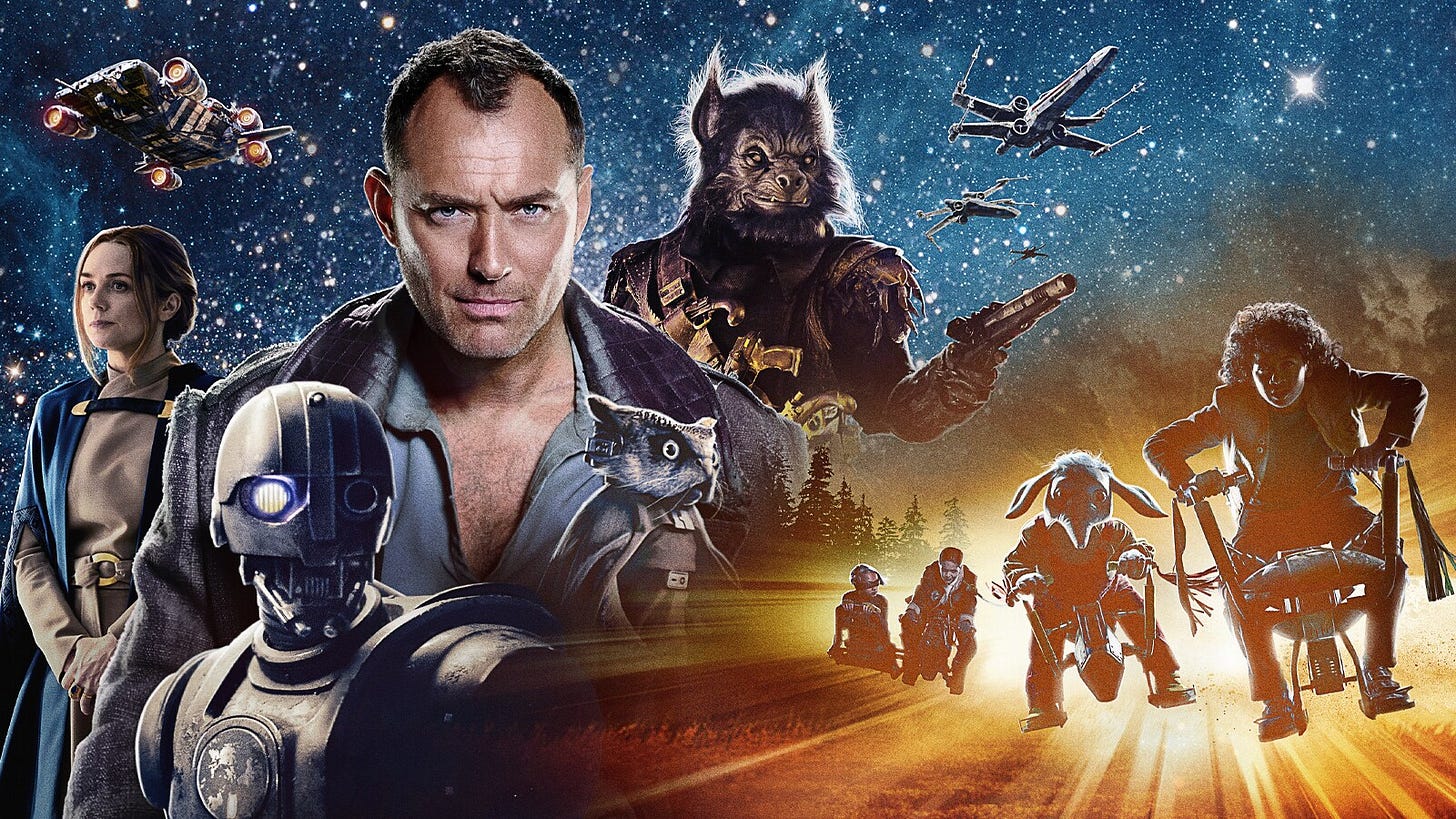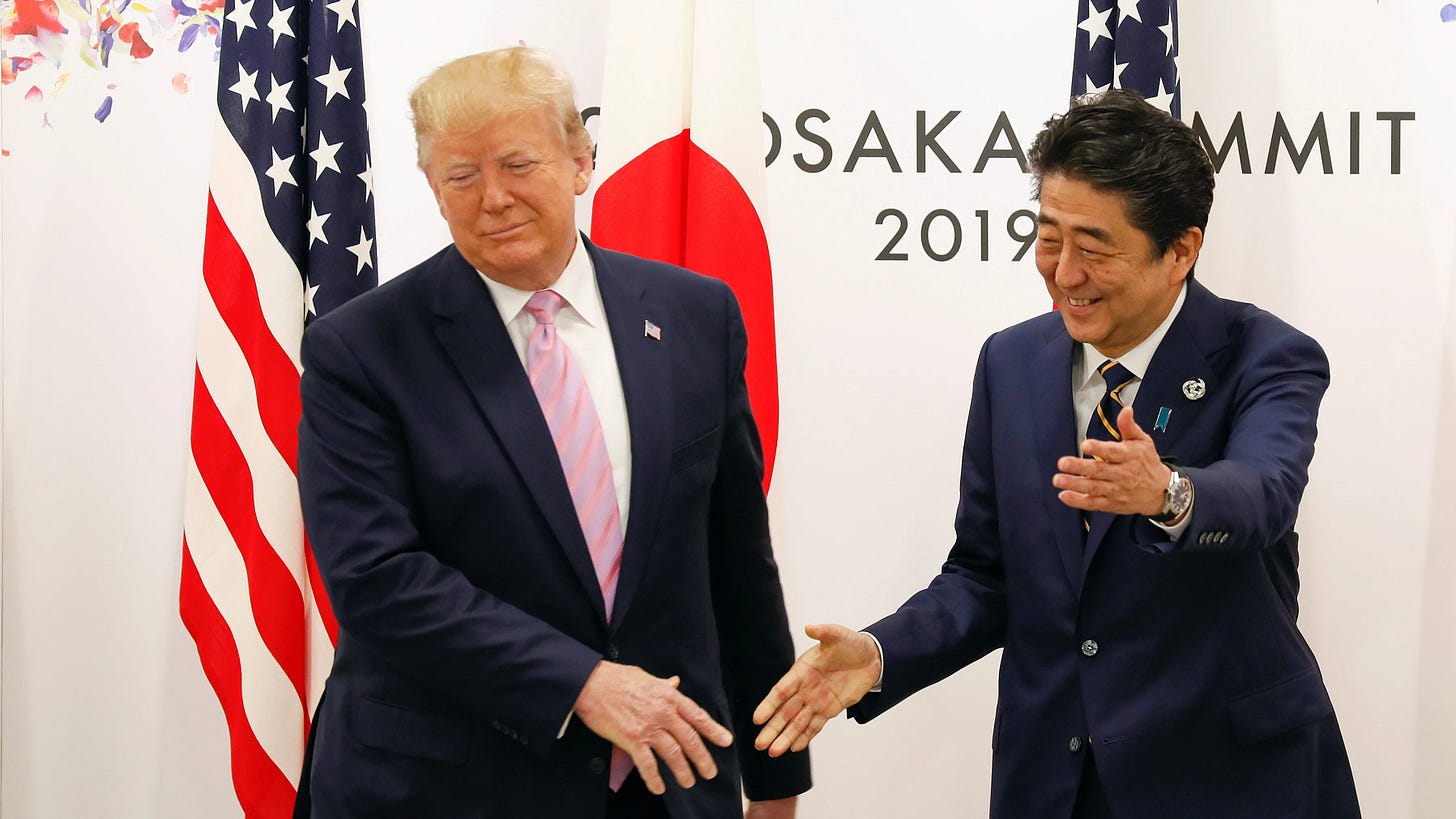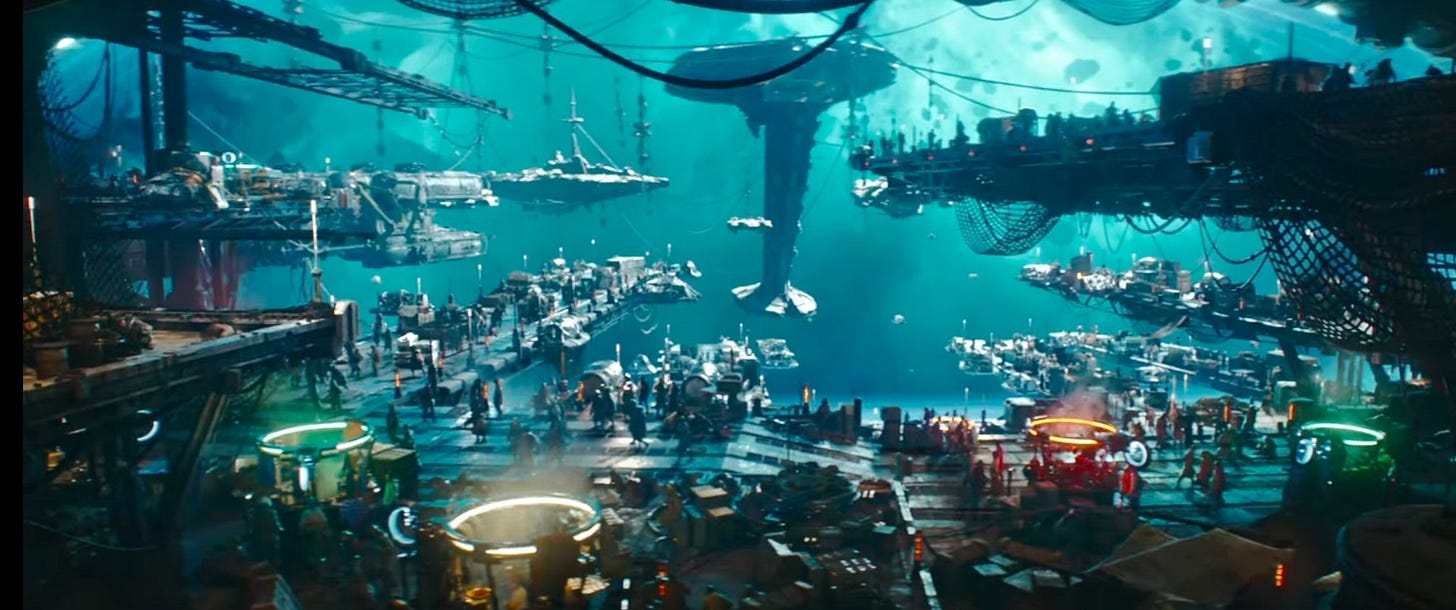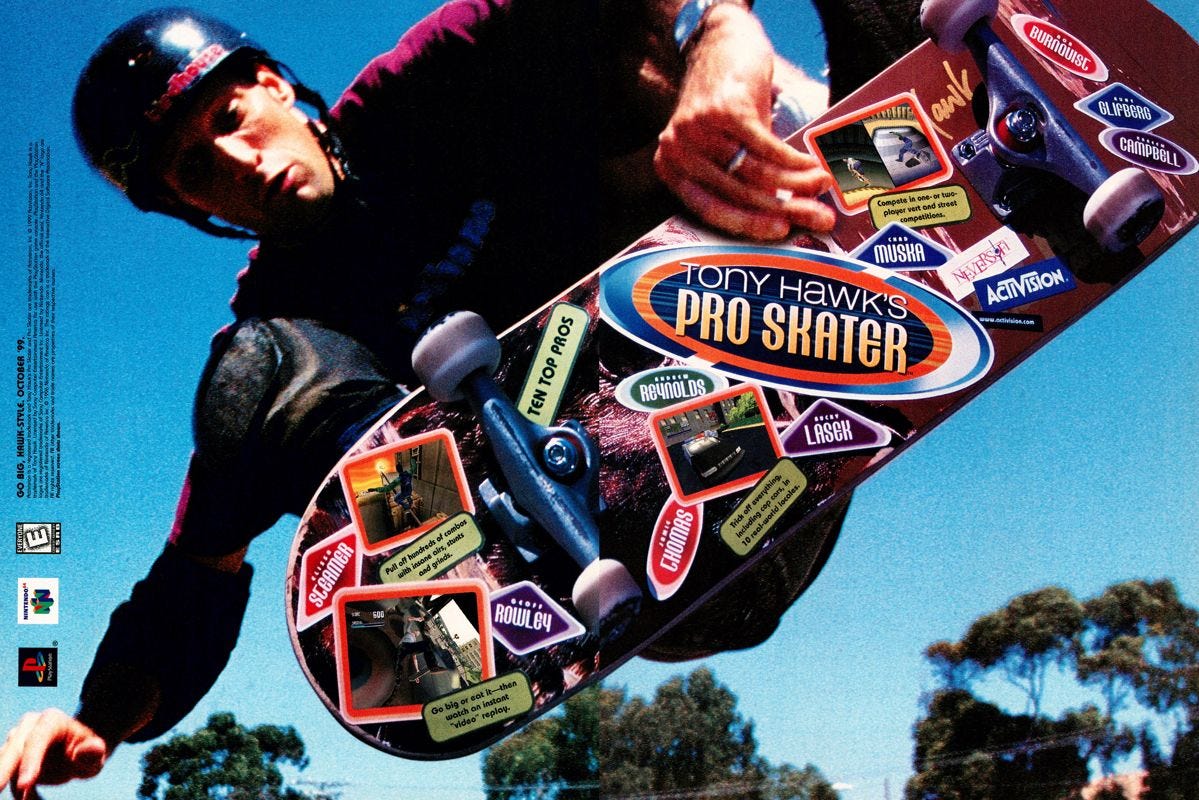Bonus Perspectives: Ukraine Talks Resume, Trump Bashes Japan Security Pact, "Star Wars: Skeleton Crew," and "Tony Hawk's Pro Skater"
Ukraine returns to the negotiating table, Trump is wrong about geopolitical security with Japan, and your weekly media recommendations.
Bonus Perspectives is a weekly column series containing my thoughts on the latest international news and Japanese news, as well as film, television, music, book, and video game recommendations. It’s free for all subscribers to this Substack, but if you enjoy my writing, consider opting for a paid subscription. Doing so will give you access to exclusive in-depth pieces and my entire backlog of work. Your support is greatly appreciated!
Ukraine says it’s ready for a 30-day ceasefire if Russia agrees

In a significant reversal from Ukrainian President Volodymyr Zelenskyy’s explosive meeting with U.S. President Donald Trump at the White House less than two weeks ago, it appears that a ceasefire with Russia is back on the menu. Secretary of State Marco Rubio and National Security Adviser Mike Waltz met with a delegation of Ukrainian officials in Saudi Arabia on Tuesday to get relations with Kyiv back on track and discuss the future of the war. This was a highly anticipated summit because it followed Zelenskyy’s attempts at mending his relationship with Trump, something that the U.S. president was receptive to during his recent address to Congress.
Speaking to reporters after Tuesday’s summit which lasted over eight hours, Rubio and Waltz revealed that Ukraine will agree to a 30-day ceasefire provided that Russia also accepts the same proposal. Framing the meeting as a productive success, the two officials announced that Washington would immediately resume aid and intelligence sharing with Kyiv. Rubio said he would convey the proposal through official channels and that the ball was now in Russia’s court. Trump seemed to be pleased with results and replied that he would be open to inviting Zelenskyy back to the White House. These are positive developments to be sure, but they only portend many more years of complex issues.
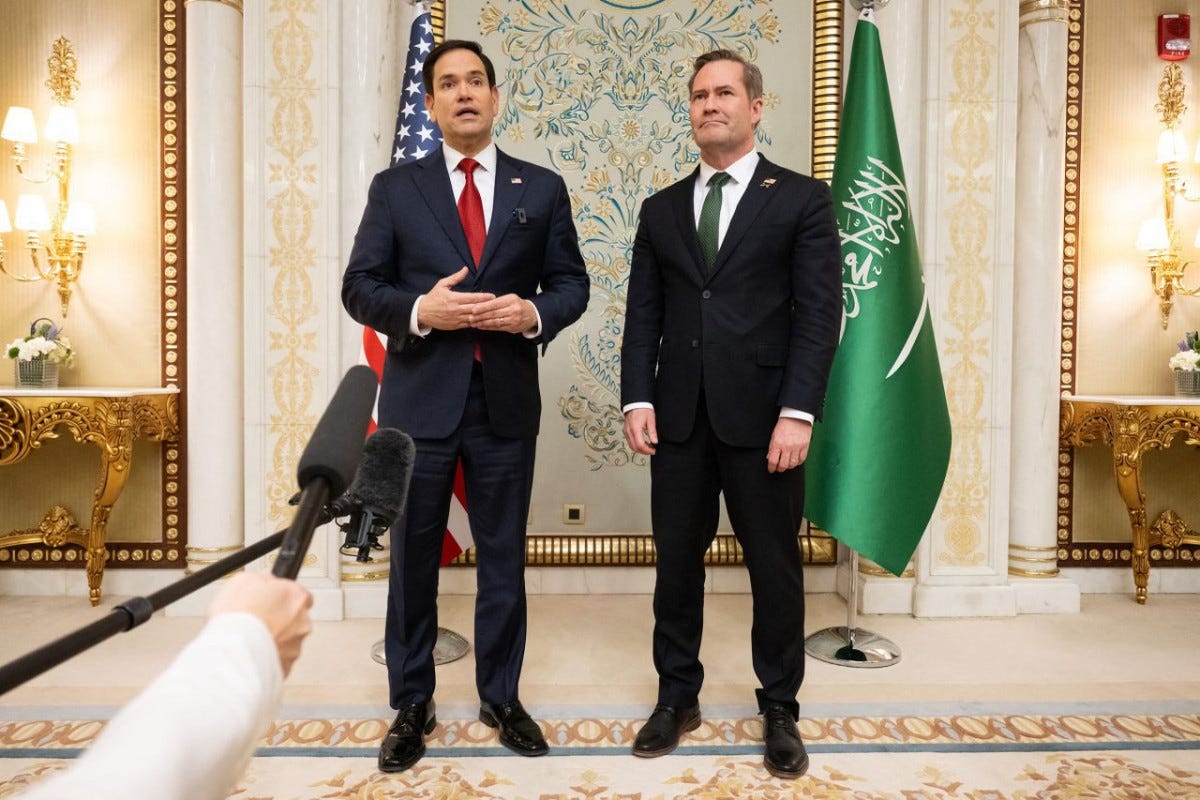
First, this summit essentially signals that the war will continue to be a stalemate without U.S. involvement. While Zelenskyy is wisely pursuing more help from European allies in the wake of his argument with Trump, his recent actions suggest that he realizes that Washington’s role cannot disappear. Second, it’s obvious that Zelenskyy had to bend the knee. This proposed 30-day ceasefire is one even more drastic than the terms the Ukrainian president initially discussed on social media. As I argued in my column last week, I don’t think that anything he said at the White House was incorrect, but publicly disagreeing with Trump was why that meeting ended the way it did. These diplomat-level talks in Saudi Arabia were the right approach because everything was conducted behind closed doors.
Third, the ball is indeed in Russia’s court as Rubio stated. At this point, Trump and Zelenskyy appear to finally be on the same page with moving forward to the next stage. It’s now up to Vladimir Putin to decide if he will accept the ceasefire terms. Neither side is making any significant progress on the battlefield, but Russia could feasibly continue to wear Ukraine down via a war of attrition. Moscow cares little about turning soldiers into meat grinders, whether their own or the thousands of North Korean troops joining the fight. Regardless, Putin likely does not want to wage a costly, indefinite war. He very well could accept the ceasefire terms out of pragmatism, and there will probably be an official response from Russia by the time you read this column.
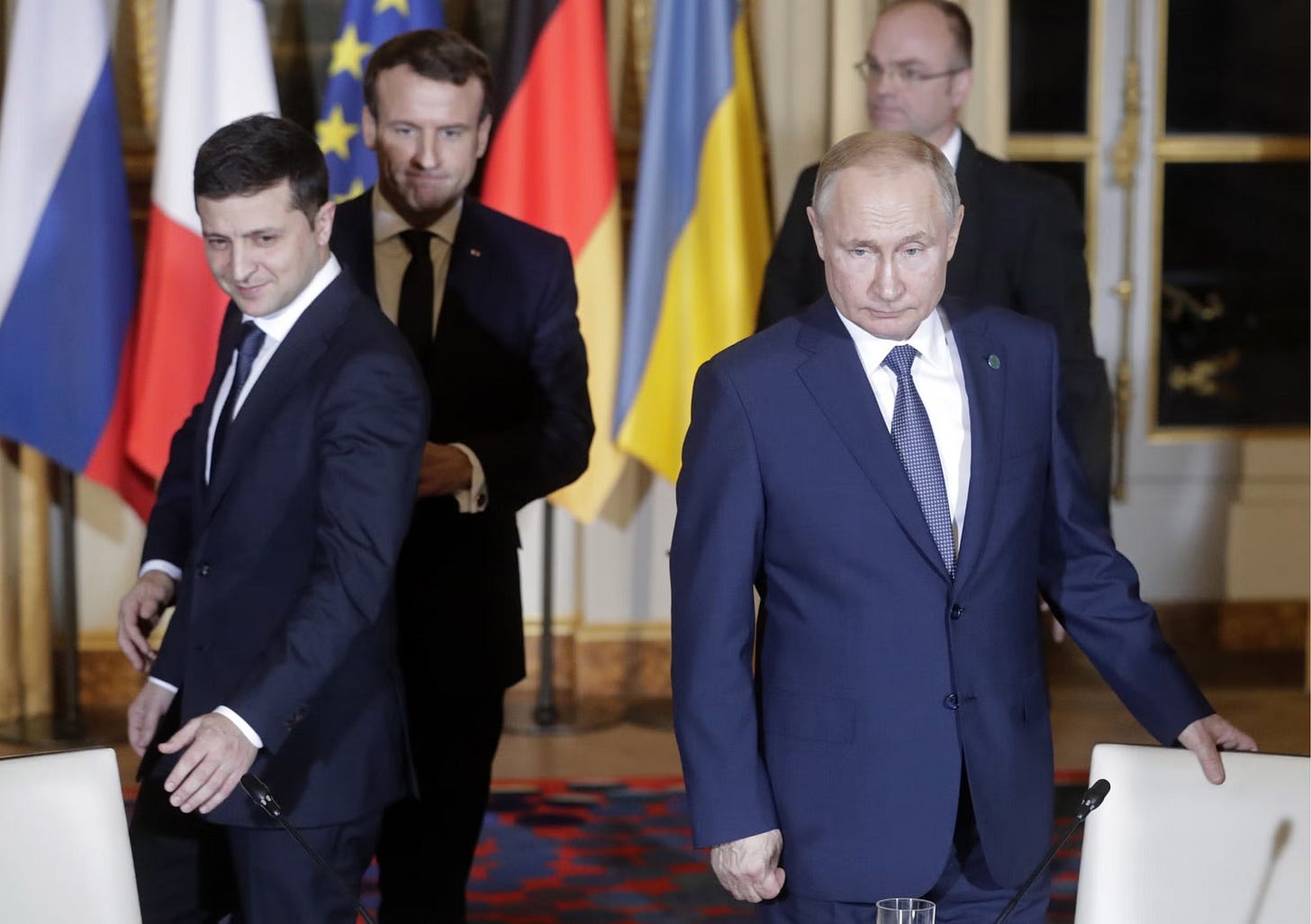
Most importantly though, a 30-day ceasefire would not be the end of tensions between Ukraine and Russia. Rubio on Wednesday asserted that the goal is to create the conditions for actual diplomacy to happen. Points like what territory both sides will cede, what security guarantees the Trump administration will provide Kyiv, and what will happen to the Ukrainian children abducted by Russia are still up in the air. Even if these issues were to be resolved in the short-term, Ukraine’s sovereignty needs to be protected and Russia cannot be allowed to wage another invasion a few years down the line.
As I’ve alluded to previously, what is likely to happen is a frozen conflict not unlike that seen between both Koreas. Ukraine and Russia will continue to live next to each other, but in a state of constant tension. These are countries that, conceivably for the rest of the century, will always waver on the precipice of full scale war happening again. Zelenskyy, Putin, and Trump will try to reach a deal that can have them walk away from the negotiating table and tell their people that they “won.” Of course, no one will have really won. The next era of problems is just getting started.
Trump’s bashing of the Japan-U.S. Security Treaty is nonsense, but it needs to be taken seriously

Donald Trump continues to say bullshit, but then again the sky is blue, water is wet, and women have secrets. Even the U.S. president’s most ardent defenders are likely to admit that Trump doesn’t exactly come across as particularly erudite when discussing complex geopolitical issues. He instead tends to frame international relations as business deals, treating other countries like partner firms or rival companies. This was evident last week when Trump took aim at the current Japan-U.S. Security Treaty, complaining that while the U.S. is obligated to protect Japan in the event of an attack, the same does not hold true vice-versa. “Under no circumstances do they have to protect us,” he added.
The Japanese government actually did respond to these remarks, with Chief Cabinet Secretary Yoshimasa Hayashi stating:
“Article 5 of the Japan-U.S. Security Treaty stipulates that Japan and the U.S. will respond jointly to armed attacks on Japan. Article 6 allows the U.S. to use Japanese facilities to contribute to Japan's security and to maintain international peace and security in the Far East.”
If an enemy country were to launch an assault against U.S. military bases stationed in Japanese territory, then under the current treaty it would be required for Japan to provide assistance. I’m assuming that this is what Trump is referring to because otherwise it would be quite ludicrous to expect Japan to come to the United States’ aid if, say, Florida was attacked by the Cubans. Given his current proposals to annex Greenland and occupy Gaza, maybe he actually is unironically complaining about such a scenario just to see what happens. I would not put it past him given the president’s tendency to fire off such blunt remarks first and sort out the details later. Art of the deal perhaps? Surprisingly, there may be something there.
In fact, this subject is nothing new for him. During his first term, Trump pretty much made the same complaint toward the Shinzo Abe administration in 2019 and reportedly told the late prime minister himself that the “unfair” security treaty needed be changed. That amounted to a whole lot of nothing, but the same year Trump demanded that Tokyo pay more to host the over 54,000 U.S. troops on Japanese soil. Washington at the time requested that Japan pony up $8 billion, up from its then budget of $2 billion. Amazingly, this ended up happening in 2022. While that was during the Biden administration, Trump was the one to push for Japan to increase its financial burden in the first place.
Will that and Japan significantly raising its defense spending be enough to appease Trump 2.0? That remains to be seen, but either way his remarks on the security treaty should not be dismissed as mere noise-making. The entire text of the Treaty of Mutual Cooperation and Security between the United States and Japan is available on Japan’s foreign ministry website, so I recommend checking it out if you’re interested in getting the full context of what it entails. The agreement is notable for having been signed in 1960 and receiving no further amendments since, making it the longest lasting treaty between two great powers in centuries.
Yet Article 10 is where things get complicated:
“This Treaty shall remain in force until in the opinion of the Governments of Japan and the United States of America there shall have come into force such United Nations arrangements as will satisfactorily provide for the maintenance of international peace and security in the Japan area. However, after the Treaty has been in force for ten years, either Party may give notice to the other Party of its intention to terminate the Treaty, in which case the Treaty shall terminate one year after such notice has been given.”
This treaty has stood the test of time for 65 years well past its original duration of a decade, but Trump is someone who thumbs his nose at tradition and established norms. As we saw earlier this month, his administration froze military aid and temporarily suspended information sharing with Ukraine only to reverse those decisions after Tuesday’s meeting in Saudi Arabia. Even with that resolved for the time being, Europe is now seriously reevaluating the future of its security relations with the U.S. and just approved a massive increase in defense spending, which is ironically what Washington wanted to happen in the first place. Again, a generous interpretation of Trump’s actions points to a shrewd businessman trying to put on as much pressure as possible to get a better deal.
I’m willing to bet dollars to donuts that Trump is more than aware that he could terminate the security treaty with Japan as outlined by Article 10 if he felt inclined to do so. If Tokyo displeases him, he can always threaten this endgame as leverage to get what he wants. Actually pulling out from the treaty would have massive implications for geopolitical security in East Asia and alienate U.S. relations with Japan for decades to come. Shinzo Abe was able to dissuade Trump from pursuing such overly rash actions, but he does not have that kind of close friendship with current Prime Minister Shigeru Ishiba.
For the time being though, there is a low risk of anything too dangerous happening because the U.S. and Japan are still on reasonably good terms. As I outlined in my column for UnHerd about their first meeting, Ishiba is pragmatically weighing his options on how to deal with the Trump-sized hole in his pocket. Both men have ideological disagreements, but the Japanese prime minister will make appeasing Washington a major priority. I mentioned last week how I’m not a fan of Trump acting like Vito Corleone toward important allies, but that’s unfortunately how the game is going to be played for the next four years.
What I’m watching — Star Wars: Skeleton Crew is a good show no one will ever watch
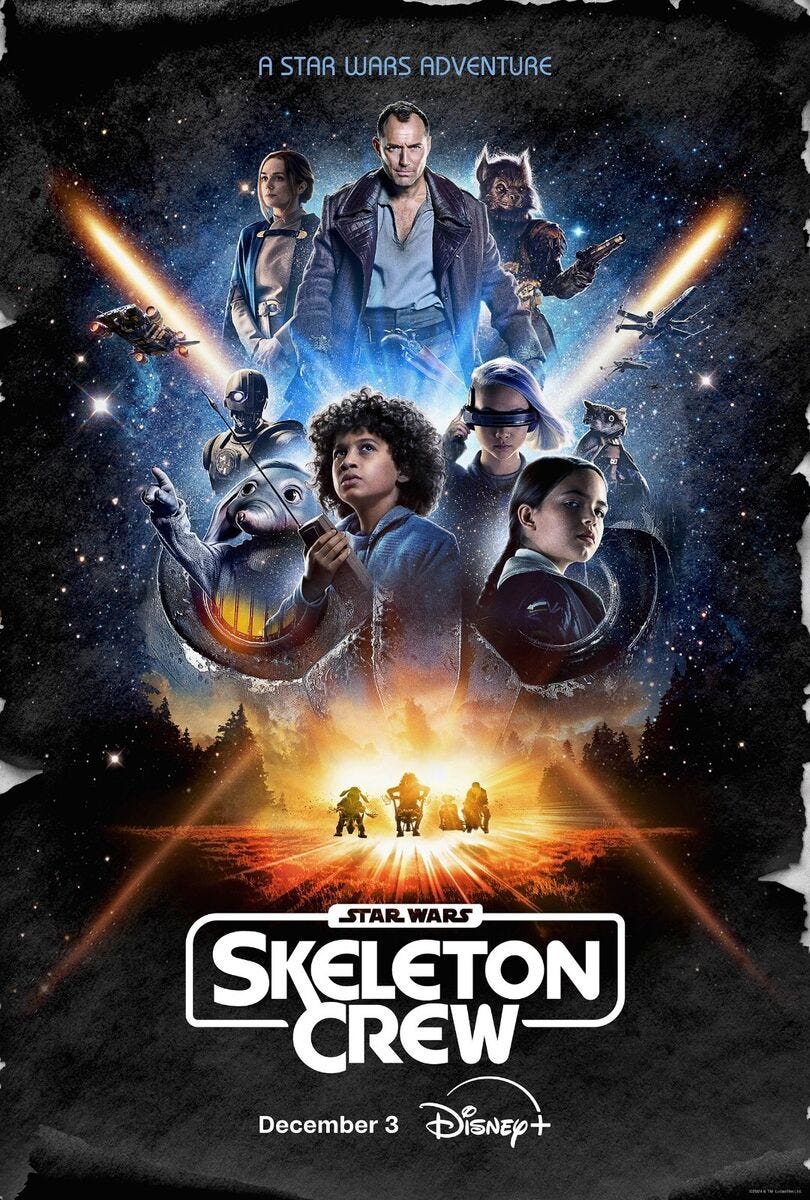
Oh Star Wars, what has become of thee? You went from being the biggest film in the world ten years ago with The Force Awakens only to be reduced to the depths of television streaming hell with The Acolyte. I have a lengthy article in the works which will cover the full downfall of this once mighty franchise, but the sad reality is that Star Wars is no longer the cultural phenomenon it once was. Kids today don’t give a toss about this IP as evidenced by the abysmal toy sales, while the average viewer has long stopped caring because of how poorly the sequel trilogy was handled.
In 2025, Star Wars is more or less a niche interest only held up by Disney sycophants or people with battered spouse syndrome like me. I stick around because we occasionally get something good like Andor and I try my best to shout from the rooftops whenever that happens. Well, this is one of those rare rooftop-shouting moments. Skeleton Crew, released on Disney+ late last year and having just recently finished its run, is surprisingly enjoyable. So enjoyable that I would recommend this show to just about everyone, kids and adults alike. Yes, I am in fact talking about a modern Star Wars Disney production. No, I wasn’t drinking when I wrote this section.

What works in Skeleton Crew’s favor is that it’s a fun, low-stakes story that has no major ramifications for the existing Star Wars canon. That allowed Jon Watts and Christopher Ford of Spider-Man: Homecoming fame to create a light show that focuses around the simple premise of a bunch of kids trying to get home while dealing with space pirates along the way. The obvious inspiration for Skeleton Crew was Goonies, but it also takes great influence from traditional adventure romps like Treasure Island and The Wizard of Oz. If you took away the space setting and high-tech ships, this easily could have been a story featured in one of the pulp action film serials George Lucas watched as a kid.
The child actors do a generally good job with the material, though admittedly Wim is probably one of the weaker Star Wars protagonists. He does mature somewhat as the show goes on, but it’s definitely a far cry compared to Ezra Bridger who had a far more satisfying character arc in Star Wars: Rebels which had the benefit of being a much longer series. This is a show I now find myself hoping will get another season or two to give us those moments. That’s especially true with Jude Law’s character Jod Na Nawood, the biggest highlight of Skeleton Crew. The writers did a fantastic job giving him a nuanced backstory and motivation, but you are still left wanting to learn more about him by the end.

I was also surprised to see just how much care and attention went toward Skeleton Crew’s worldbuilding. Thanks to some exquisite artwork, practical effects, and interesting ship designs which call back to the original trilogy, the viewer is convincingly given the sense that these kids are microscopic individuals against the impossibly massive scale of the entire galaxy. It almost feels like an issue out of Marvel’s original 1970s Star Wars comic book run or an early Expanded Universe novel featuring Han Solo’s adventures to strange worlds. When was the last time Star Wars truly captured that sense of wonder and potential?
Of course, there’s the elephant in the room. For as good as Skeleton Crew is, no one is watching it. And can you really blame them? If most hadn’t dropped Star Wars completely after how poorly the sequel trilogy was handled, last year’s The Acolyte demonstrated just how badly the brand under Disney could get. I finally watched that show for the sake of completion recently and Skeleton Crew completely blew it out of the water in everything from presentation to story. Again, we’re talking about a lighthearted adventure over what was supposed to be an essential prequel with huge consequences for the entire lore. Even Disney knew how bad The Acolyte was because they swiftly canceled it.
I can wholeheartedly recommend Skeleton Crew even to people who only have a passing interest in Star Wars. It’s abundantly clear though that this franchise is in trouble. Andor Season 2 is probably going to face similar issues with viewership and the only other major project currently on the docket with a firm release date is The Mandalorian & Grogu film set for 2026. My wife and I will be attending Star Wars Celebration in Tokyo next month where more announcements are expected to happen, but Disney seriously has to pull its act together. It doesn’t matter how good something like Skeleton Crew or Andor is if no one is watching. The final episode of Skeleton Crew has a line about the cruelness of the galaxy, but it ironically is also applicable to the current state of Star Wars: “Dark, with a few pinpricks of light.”
What I’m playing — Tony Hawk’s Pro Skater gave me nostalgia for an era I didn’t grow up in
Let me take you back to 1999. The Cold War is over and 9/11 hasn’t happened yet. Everyone is optimistic about the upcoming new century. The internet is still a new thing for most and there isn’t 24/7 social media running every facet of our lives. It’s very much an analog world where you need to use landline phones to stay in touch and physically go to your friends’ houses to hang out. If you’re a kid, any video game you can get is a rare treat that you’ll spend hours tinkering with because there’s nothing else to do other than go outside. If you do go outside, perhaps you’ll take up a sport like skateboarding which is at the height of its popularity because the 1990s are the era of “extreme.” If you like both, you’ll undoubtedly be addicted to Tony Hawk’s Pro Skater out on the original Sony PlayStation and eventually every other major games console the following year.
Or at least that’s how I imagine it probably went down. As someone born in 1997, I can’t claim to be a 90s kid. Sure, I existed during less than three years of the decade, but my earliest childhood memories are squarely in the 2000s. I never grew up with Tony Hawk’s Pro Skater. While the numerous sequels did come out on other systems, I was primarily a handheld gamer with the Game Boy Advance and Nintendo DS. There were scaled down Tony Hawk games for those platforms too, but that’s not what most people think of whenever the name “Pro Skater” is brought up.
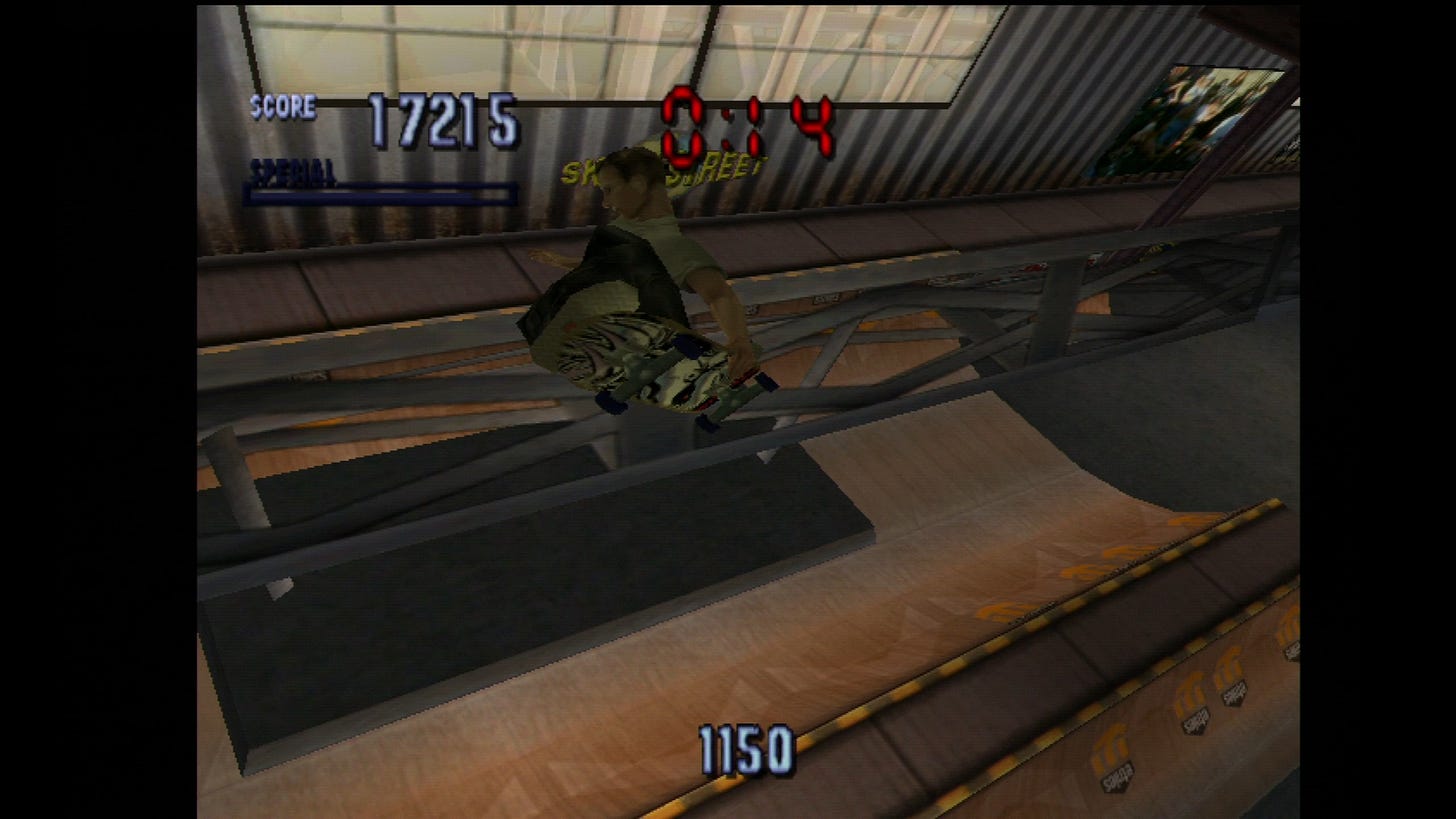
It was only this month that I finally decided to get into this series with the recent announcement of Tony Hawk’s Pro Skater 3 + 4, a complete remake of the third and fourth games done in the same vein of Tony Hawk’s Pro Skater 1 + 2 which came out in 2020. Hype for this new remake is massive, which is a testament to just how much love and nostalgia exists for this franchise over 25 years later. Being a purist who likes to play originals before remakes, I fired up my Retroid Pocket 5 Android handheld console and loaded up the very first Tony Hawk’s Pro Skater via a PlayStation 1 emulator.
At first, it was a pretty brutal experience. It seemed that I had no control over my character and this digital version of Mr. Hawk performed about as well as I probably would if I decided to get on a skateboard today. I initially struggled to perform any of the moves that were essential for racking up points and achieving the challenges, which almost resulted in me quitting entirely. But then I stuck with it for a couple of hours and soon it all clicked. I got accustomed to the movement and I eventually realized that chaining together combos was more or less the equivalent of a rhythm game. Had I been a kid back then, I could easily imagine spending my afternoons in front of a television with Tony Hawk’s Pro Skater.
No discussion of the Tony Hawk games is complete without the incredible soundtrack. Music has always been an integral part of skateboarding culture, something the man himself wished to convey with a series bearing his name and likeness. Whether it’s the adrenaline-fueled lyrics of Goldfinger’s “Superman” which hit all the more harder as an adult or the utter strangeness of Primus’ “Jerry Was A Race Car Driver,” this is a thoroughly riveting soundscape that perfectly embodies the 1990s. I’ve proceeded to add these artists to my music library and am looking forward to listening to more of their work, some of which is likely to feature in future editions of Bonus Perspectives.
As of this writing, I’m still doing my best to get through the stages of the first Tony Hawk’s Pro Skater, each of which seems to get more difficult than the last. I don’t feel any pressure to rush through any it; at this point I simply want to hone my muscle memory and become more skilled at the mechanics until they become second nature. Once I sufficiently clear the first two games, I certainly intend to challenge myself with the remakes since they’ve been significantly modernized and run on different engine physics. Being in my late 20s with a plethora of adult responsibilities, it’s probably too late for me to get into real skateboarding, but I’m perfectly satisfied losing myself in this arcadey virtual edition of the sport. Thank you for introducing me to a new world, Mr. Hawk.
Foreign Perspectives is a reader-supported Substack. If you like my work and have come this far as a new reader or free subscriber, consider opting for a paid subscription so I can continue writing in-depth articles such as these on a regular basis. Your support is greatly appreciated!


